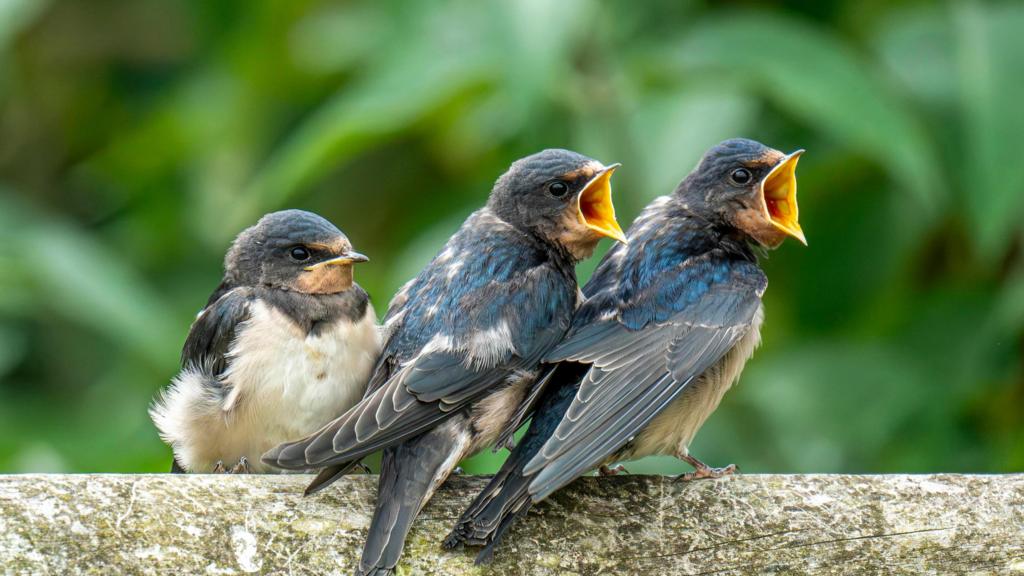As the UK anticipates what is being described as a “mini-heatwave,” the warmer conditions are set to benefit not only people but also the natural world.
This burst of warmth is expected to temporarily invigorate nature, with migratory birds making their seasonal return and butterflies beginning to emerge.
According to the British Trust for Ornithology (BTO), a sequence of milder winters and increasingly wet springs continues to influence wildlife dynamics across the UK.
While experts say a short period of warmth will have limited long-term impact, it offers nature enthusiasts an ideal opportunity to observe seasonal changes.
“The fine weather encourages us to spend more time outdoors and enjoy the peak of the dawn chorus, which is best experienced on calm, warm mornings,” explains Jon Carter from the BTO.
The Met Office reports that a brief warm spell at the close of April is generally positive for wildlife, and is unlikely to significantly affect ponds and other water bodies.
“Climate change is already impacting wildlife considerably, but a short-lived temperature rise like this is a seasonal bonus,” says Grahame Madge of the Met Office.
Some animals respond rapidly to spring warmth, so local green spaces are expected to teem with activity in the week ahead.
Both butterflies and birds are likely to be especially noticeable, adds Mr Madge.
Research indicates that higher temperatures can prompt birds to breed earlier and reduce incubation times for their young.
Migratory species, such as swallows and swifts—which return to take advantage of abundant insects—could arrive in Britain ahead of schedule. Notably, a swallow was sighted in southern England before March this year, according to the Met Office.
Warmer weather also encourages butterfly activity, sometimes prompting red admirals, once solely migratory, to emerge sooner.
Peacock and small tortoiseshell butterflies are among the earliest to appear, with further species expected as spring progresses.
This period also marks the reappearance of dragonflies.
Rare birds, such as the vibrant European bee-eater—now observed nesting in the UK—could also be spotted by keen wildlife observers.
Wildlife organisations encourage enjoying the outdoors responsibly, highlighting the increased risk of fires in the current dry conditions.
Oliver Fry of Surrey Wildlife Trust notes that Surrey’s heathlands are particularly at risk, comparing the landscape’s dryness to a “tinderbox”.
These heaths, fringed by gorse and heather, support rare species such as sand lizards, woodlarks, and the silver-studded blue butterfly.
Earlier this month, conservationists warned that some of the UK’s rarest species are at grave risk due to a surge in severe grass fires.
Anne McCall, director of RSPB Scotland, says climate change is fuelling more frequent and intense wildfires, especially in the spring months.
“Wildfires destroy more than just vegetation,” she points out. “This is a vital period for native wildlife, with many birds nesting and amphibians and reptiles emerging from winter and beginning to breed.”
Along the coast, experts have reported increased sightings of whales and dolphins close to UK shores—an occurrence likely linked to warming seas and broader climate shifts.
“Encountering whales and dolphins is always thrilling, but seeing greater numbers and rarer species around the UK coastline may signal deeper disruptions,” says Danny Groves of Whale and Dolphin Conservation.
He notes that heatwaves and rising sea temperatures are forcing some whale species far beyond their usual ranges in a struggle for survival.
Follow Helen on X and on Bluesky.
Converting traditional lawns to meadows offers notable benefits for both biodiversity and the climate—fueling the rise of ‘meadowscaping’ in gardening trends.
A van was reportedly driven slowly toward demonstrators during a large protest in London.
Newly planted trees are expected to help protect ecosystems while mitigating soil erosion and flooding risks.
Conservationists see the resurgence of the rare fish-eating bird as a positive sign for its recovery in the UK.
The birth of three “dire wolf” pups has sparked hope for the revival of extinct species, although some researchers caution against potential risks.

